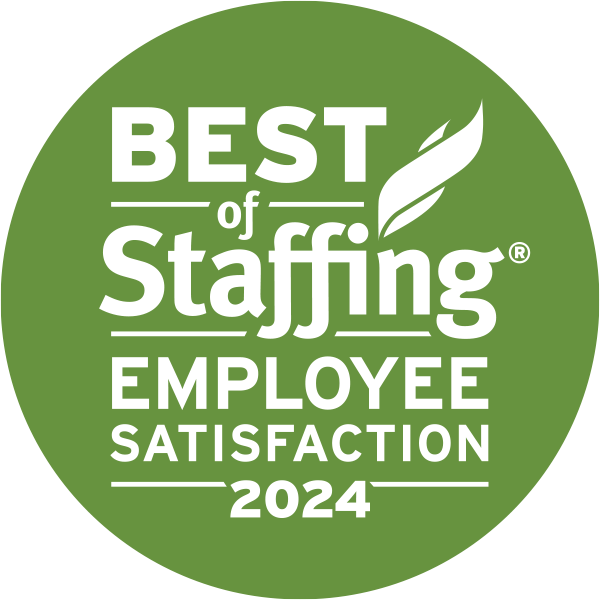How jobs have returned … and how much further they need to go to return to where they were …
We started this year with our report of the December 2020 employment situation looking at how some staffing-centric industries / sectors have recovered by November — or had started to recover — from the massive loss of jobs due to the pandemic. It has been more than half a year so we think it would be of interest to see how far jobs have come back — and possibly how far they still have to travel to get back to pre-pandemic levels.
[note: depending upon how your browser and / or email program renders the above chart, it may be difficult to view; we suggest you click on it to open a larger version.]
Total nonfarm jobs dropped 14.7 percent to its trough in April 2020 from its peak two months earlier and was still down 4.4 percent from its peak but up 12.0 percent from its trough in June 2021. Private-sector jobs trended similarly but were down further — declined 16.5 percent — into its trough and rebounded higher — up 14.4 percent. Interestingly, both were up 4.4 percent in June 2021 from their peaks.
We won’t go through each of the sectors or subsectors that are presented in the table — you can see that for yourselves — but will highlight some specifics for the outliers to the overall job trends.
All but one of the sectors examined were still down in June 2021 from their respective peaks of February 2020 sans one — computer systems design and related services was essentially able to return to its February 2020 level with a marginal gain of 2,700 jobs or 0.1 percent growth.
Food services and drinking places were the hardest hit by the pandemic in terms of the number of jobs and was still down 10.3 percent in June 2021 from its February 2020 peak but is up 74.3 percent from its April 2020 trough.
Clearly, temporary help services was hit very hard in April 2020 with a 33.9 percent decline from its peak two months earlier in February 2020, and by June 2021 it was up 33.7 percent from its April 2020 trough. But temporary help services was still down 8.5 percent in June 2021 from its February 2020 peak, so there appears to still have plenty of room to grow.
The employment situation continues to be on the mends, but further upside movement appears to be mainly limited by a lack of workers. If you find this information interesting and helpful and would like to see similar data for other industries / sectors, let us know and we may just address it in the future.
July 2021 Employment Report
Quick recap
The unemployment rate dropped 0.5 percent to 5.4 percent in July as the total number of nonfarm jobs increased 943,000. In June, the previous month, the unemployment rate ticked up to 5.9 percent and the increase in total nonfarm jobs was 938,000.
In our previous report, we wrote, “In June, many people returned to the workforce but since not all of them could secure a job immediately, the unemployment rate bumped up. The question remains as the rich unemployment benefits expire, how quickly will those returning to the labor force will be able to find jobs.” Well, apparently many people did find jobs in July as the data show.
Average hourly wages were up 11 cents in July after rising 12 cents in June. The average workweek for private, nonfarm employees was unchanged at 34.8 hours. The average workweek in manufacturing increased by 0.2 hour to 40.5 hours and overtime was unchanged at 3.2 hours.
Earlier Temporary Help Services data were revised and the previously reported three consecutive months of declines is now only two consecutive months of declines; the July jobs number increased, but nothing too fantastic to write home about.
Jobs Report
As you may be aware the monthly job numbers by industry / sector are derived from a complex statistical model based on data from a monthly survey of a limited number of employers. As you will see below, it appears that the BLS’s formula could be having issues trying to accurately estimate the job counts in some industries / sectors in the quickly changing job market as some previously published data have been revised by relatively large amounts.
Private sector employers added 703,000 job in July compared to the June increase of 769,000, which was initially reported last month as a 662,000-job gain.
The private Goods-producing sector added 44,000 jobs in July after adding 45,000 in June, which was initially reported as a gain of 20,000 jobs last month.
-
Manufacturing continued to improve with an increase of 27,000 in July after adding 39,000 in June, which was first reported as an increase of 15,000 last month.
-
The Construction sector expanded by 11,000 jobs in July after declining by 5,000 in June, which was initially reported as a decline of 7,000.
-
Mining and logging added 6,000 jobs in July on top of the 11,000 it added in June, which was initially reported as an increase of 12,000 job gain in June.
The Service-providing sector that added 659,000 jobs in July after adding 724,000 in June, which was initially reported as an increase of 642,000.
-
The Retail trade sector processed 5,500 returns (decreased) in July after apparently overhiring in June with an increase 72,500, which was initially reported as an increase of 67,100.
-
The Wholesale trade sector increased only 2,800 in July that was a fraction of the 27,200 it added in June, which was initially reported as an increase of 21,300.
-
Transportation and warehousing really got moving with an increase of 49,700 in July after adding 19,600 in June, which was initially reported as a gain of 10,700.
-
Financial activities seemed to increase its interest in hiring with 22,000 more jobs in July after debiting 1,000 in June, which was initially reported as the same with a decline of 1,000.
-
The Professional and business services sector added 60,000 jobs in July after adding 75,000 in June, which was initially reported as a gain of 72,000. Computer systems design and related services calculated 5,200 more jobs in July after adding a similar 5,300 in June, which was initially reported as essentially flat with a marginal decrease of 100 jobs. Management and technical consulting services added 8,300 in July that followed an increase of 5,800 in June, which was initially reported as an increase of 5,000. Architectural and engineering services added 4,600 jobs in July after adding 2,700 in June, which was consistent with the initial data of an increase of 2,800.
-
The entire private Education and health services sector added 87,000 jobs in July on top of the 60,000 it added in June, which was initially reported as an increase of 59,000. Home health care services added only 1,200 jobs in July after declining by 1,000 in June, which was initially reported as a decline of 3,300.
-
The Leisure and hospitality sector continued grow like dandelions in the summer with an increase of 380,000 in July after adding 394,000 in June, which was initially reported as growth of 343,000 jobs in June.
The total number of Government jobs was up a total of 240,000 in July after adding 169,000 in June, which was initially reported as an increase of 188,000. The Federal government was down a total of 18,000 jobs in July. State government declined 8,000 despite an increase of 9,900 in state government education and Local government was up 230,000 driven in large part by the 220,700 in local government education.
Temporary Help Services Roundup
Revised figures show Temporary Help Services only experienced decreases in March and April by actually increasing in May instead of the previously calculated decline. Moving to the present, THS grew by a fairly tepid 9,700 in July after adding 35,000 in June, which was initially reported as a gain of 33,000. To summarize the July 2021 performance, the number of THS jobs clocked in at 2,692,000 that was an increase of 0.4 percent from June 2021 and up 18.0 percent from July 2020.
(if charts are unclear, click on it to open in a browser window)
In July 2021, temporary help services market share, which is its portion of all jobs, was 1.8335 percent down from 1.8387 the previous month mainly because of the stronger growth in the overall job market. A year ago in July 2021 it was 1.6341 percent and two years ago in July 2019 it was 1.9489 percent.
Household Survey
The unemployment rate fell 0.5 percent to 5.4 percent in July 2021 because — to state the obvious — more people had jobs and fewer people were unemployed.
The labor force expanded by 261,000 and there were 1,043,000 more employed persons and 782,000 fewer unemployed persons. The workforce participation rate was bumped up 0.1 to 61.7 percent while the employment-population ratio really moved by 0.4 to 58.4. Those considered as not in the labor force declined by 130,000.
BTW, we maintain an updated table of many major employment as well as other general economic indicators here or here for the mobile version.














